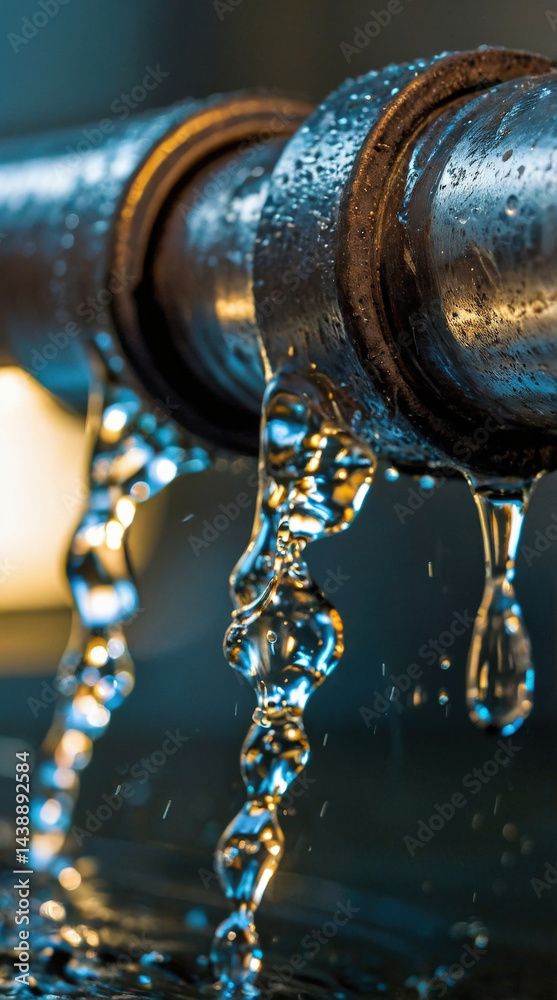Industrial safety depends heavily on the ability to detect and control leaks of hazardous gases. Traditional gas detection methods—such as chemical sensors or manual inspections—often fail to identify invisible gas emissions quickly enough to prevent danger or product loss. That’s where Optical Gas Imaging (OGI) technology, powered by infrared (IR) cameras, has become a game-changer Leak detection Liverpool. These advanced systems visualize gas leaks in real time, allowing operators to see what was once invisible to the naked eye.
Understanding OGI Technology
Optical Gas Imaging (OGI) uses infrared spectroscopy to detect gas emissions based on their unique light absorption properties. Every gas absorbs infrared radiation at specific wavelengths. By tuning the IR camera’s sensor to these wavelengths, OGI technology can visualize the escaping gas as a cloud or plume, superimposed over the real-world image.
In other words, when a gas leak occurs, the OGI camera captures the contrast between the background’s infrared signature and the gas’s absorption pattern, effectively “painting” the leak on screen. This visualization allows maintenance teams to locate and assess leaks in seconds—without interrupting operations.
The Science Behind Infrared Detection
Infrared cameras work by detecting thermal radiation, which all objects emit based on temperature. In OGI applications, the camera is equipped with filters tuned to specific absorption bands of gases such as methane (CH₄), carbon dioxide (CO₂), sulfur hexafluoride (SF₆), ammonia (NH₃), and various volatile organic compounds (VOCs).
When the camera is aimed at a suspected area, gases absorbing IR radiation at these frequencies appear as dark or light clouds, depending on the calibration and background temperature contrast. This capability allows operators to monitor for leaks remotely and even detect low-concentration emissions that might be missed by traditional sensors.
Key Advantages of OGI Technology
- Non-Contact and Non-Intrusive Detection
OGI cameras can identify gas leaks from a distance, eliminating the need for physical proximity. This is especially useful for hazardous or hard-to-reach locations such as refinery stacks, chemical plants, or offshore platforms. - Real-Time Visualization
Unlike fixed sensors that only trigger alarms, OGI cameras provide live, visual feedback. Operators can immediately pinpoint leak sources, assess their severity, and verify repairs on the spot. - Multi-Gas Capability
Specialized OGI cameras can detect multiple gases using interchangeable filters or multispectral sensors, expanding their utility across diverse industries. - Cost-Efficient Monitoring
By identifying leaks early, OGI reduces product loss and helps companies comply with environmental regulations without costly downtime. - Enhanced Safety and Compliance
Visualizing leaks helps ensure worker safety while supporting compliance with Leak Detection and Repair (LDAR) programs mandated by regulatory agencies such as the U.S. Environmental Protection Agency (EPA).
Common Applications of IR and OGI Cameras
OGI technology has become indispensable in various industrial and environmental applications:
- Oil and Gas Facilities: Detecting methane leaks from compressors, pipelines, valves, and tanks.
- Chemical Processing Plants: Locating VOC emissions that can pose health or fire risks.
- Power Generation: Monitoring for sulfur hexafluoride (SF₆) leaks in electrical switchgear and transformers.
- Refineries: Inspecting flanges, seals, and heat exchangers for hydrocarbon vapor leaks.
- Environmental Monitoring: Identifying fugitive emissions contributing to greenhouse gas accumulation.
- Waste Management: Detecting landfill gas leaks such as methane and carbon dioxide.
Types of OGI Cameras
Not all OGI cameras are built the same; different configurations serve specific purposes depending on the target gas and operational conditions.
- Cooled Infrared Cameras
These use cryogenic cooling (typically with Stirling engines) to maintain the detector at very low temperatures, enhancing sensitivity and allowing for long-range detection.- Advantages: High image resolution, superior sensitivity, ideal for methane and hydrocarbon detection.
- Drawbacks: More expensive and require periodic maintenance.
- Uncooled Infrared Cameras
Relying on microbolometer sensors, these are more compact and less costly but generally offer lower sensitivity.- Advantages: Lightweight, portable, suitable for short-range inspections.
- Drawbacks: Less effective in detecting small leaks or at long distances.
- Handheld vs. Fixed-Mount Systems
- Handheld Cameras: Best for field inspections, maintenance teams, and mobile leak detection.
- Fixed-Mount Cameras: Ideal for continuous monitoring in high-risk zones such as gas compressor stations.
Integration with Modern Leak Detection Systems
OGI cameras are increasingly being combined with other monitoring technologies to form hybrid leak detection systems. For example:
- AI-driven analytics help identify and classify gas types automatically.
- Drone-mounted OGI systems extend the reach of inspections, covering large facilities or remote pipelines.
- IoT integration allows real-time streaming of data to control centers for instant response and reporting.
These advancements not only enhance accuracy but also reduce the human risk factor associated with manual inspections.
Regulatory and Environmental Significance
The push for net-zero emissions and stricter environmental standards has made OGI technology a key compliance tool. Agencies such as the EPA, the European Environment Agency (EEA), and the Oil and Gas Methane Partnership (OGMP) encourage or require companies to adopt advanced leak detection methods.
OGI helps industries meet these goals by offering documented proof of inspection, facilitating timely repairs, and reducing fugitive emissions—a major contributor to greenhouse gas buildup.
Best Practices for Effective OGI Use
To maximize OGI performance and accuracy, operators should follow established protocols:
- Conduct inspections during favorable weather conditions with optimal thermal contrast.
- Regularly calibrate and maintain cameras for reliable readings.
- Train personnel to interpret IR imagery correctly.
- Pair OGI with complementary methods like sniffer sensors or acoustic detection for comprehensive coverage.
- Keep thorough logs for compliance and maintenance records.
Conclusion
Optical Gas Imaging using infrared cameras represents a major advancement in industrial leak detection. By turning invisible gas emissions into visible, real-time data, OGI empowers companies to improve safety, reduce emissions, and comply with environmental regulations more effectively than ever before.
As technology continues to evolve—with smarter sensors, AI-assisted analysis, and drone-based imaging—OGI stands as a cornerstone of modern industrial safety and environmental protection. What was once invisible is now clearly in view, giving industries the power to act before small leaks become big problems.

